-
- 118: PRECARIOUSwith A Jackson 117: NO THEME 14with A Creece 116: REMEMBERwith M Sahhar and A Te Whiu 115: SPACEwith A Sometimes 114: NO THEME 13with J Toledo & C Tse 113: INVISIBLE WALLSwith A Walker & D Disney 112: TREATwith T Dearborn 111: BABYwith S Deo & L Ferney 110: POP!with Z Frost & B Jessen 109: NO THEME 12with C Maling & N Rhook 108: DEDICATIONwith L Patterson & L Garcia-Dolnik 107: LIMINALwith B Li 106: OPENwith C Lowe & J Langdon 105: NO THEME 11with E Grills & E Stewart 104: KINwith E Shiosaki 103: AMBLEwith E Gomez and S Gory 102: GAMEwith R Green and J Maxwell 101: NO THEME 10with J Kinsella and J Leanne 100: BROWNFACE with W S Dunn 99: SINGAPOREwith J Ip and A Pang 97 & 98: PROPAGANDAwith M Breeze and S Groth 96: NO THEME IXwith M Gill and J Thayil 95: EARTHwith M Takolander 94: BAYTwith Z Hashem Beck 93: PEACHwith L Van, G Mouratidis, L Toong 92: NO THEME VIIIwith C Gaskin 91: MONSTERwith N Curnow 90: AFRICAN DIASPORAwith S Umar 89: DOMESTICwith N Harkin 88: TRANSQUEERwith S Barnes and Q Eades 87: DIFFICULTwith O Schwartz & H Isemonger 86: NO THEME VIIwith L Gorton 85: PHILIPPINESwith Mookie L and S Lua 84: SUBURBIAwith L Brown and N O'Reilly 83: MATHEMATICSwith F Hile 82: LANDwith J Stuart and J Gibian 81: NEW CARIBBEANwith V Lucien 80: NO THEME VIwith J Beveridge 57.1: EKPHRASTICwith C Atherton and P Hetherington 57: CONFESSIONwith K Glastonbury 56: EXPLODE with D Disney 55.1: DALIT / INDIGENOUSwith M Chakraborty and K MacCarter 55: FUTURE MACHINES with Bella Li 54: NO THEME V with F Wright and O Sakr 53.0: THE END with P Brown 52.0: TOIL with C Jenkins 51.1: UMAMI with L Davies and Lifted Brow 51.0: TRANSTASMAN with B Cassidy 50.0: NO THEME IV with J Tranter 49.1: A BRITISH / IRISH with M Hall and S Seita 49.0: OBSOLETE with T Ryan 48.1: CANADA with K MacCarter and S Rhodes 48.0: CONSTRAINT with C Wakeling 47.0: COLLABORATION with L Armand and H Lambert 46.1: MELBOURNE with M Farrell 46.0: NO THEME III with F Plunkett 45.0: SILENCE with J Owen 44.0: GONDWANALAND with D Motion 43.1: PUMPKIN with K MacCarter 43.0: MASQUE with A Vickery 42.0: NO THEME II with G Ryan 41.1: RATBAGGERY with D Hose 41.0: TRANSPACIFIC with J Rowe and M Nardone 40.1: INDONESIA with K MacCarter 40.0: INTERLOCUTOR with L Hart 39.1: GIBBERBIRD with S Gory 39.0: JACKPOT! with S Wagan Watson 38.0: SYDNEY with A Lorange 37.1: NEBRASKA with S Whalen 37.0: NO THEME! with A Wearne 36.0: ELECTRONICA with J Jones
Zoë Sadokierski
Introduction to Zenobia Frost’s After the Demolition
BUY YOUR COPY HERE Philosophical questions of reality and duality underpin many of the poems in Zenobia Frost’s After the Demolition, leading to a sense of rebuilding and remembrance in the aftermath of abodes. The potency of houses is a …
Posted in INTRODUCTIONS
Tagged Keri Glastonbury, Zenobia Frost, Zoë Sadokierski
Introduction to Charmaine Papertalk Green’s Nganajungu Yagu
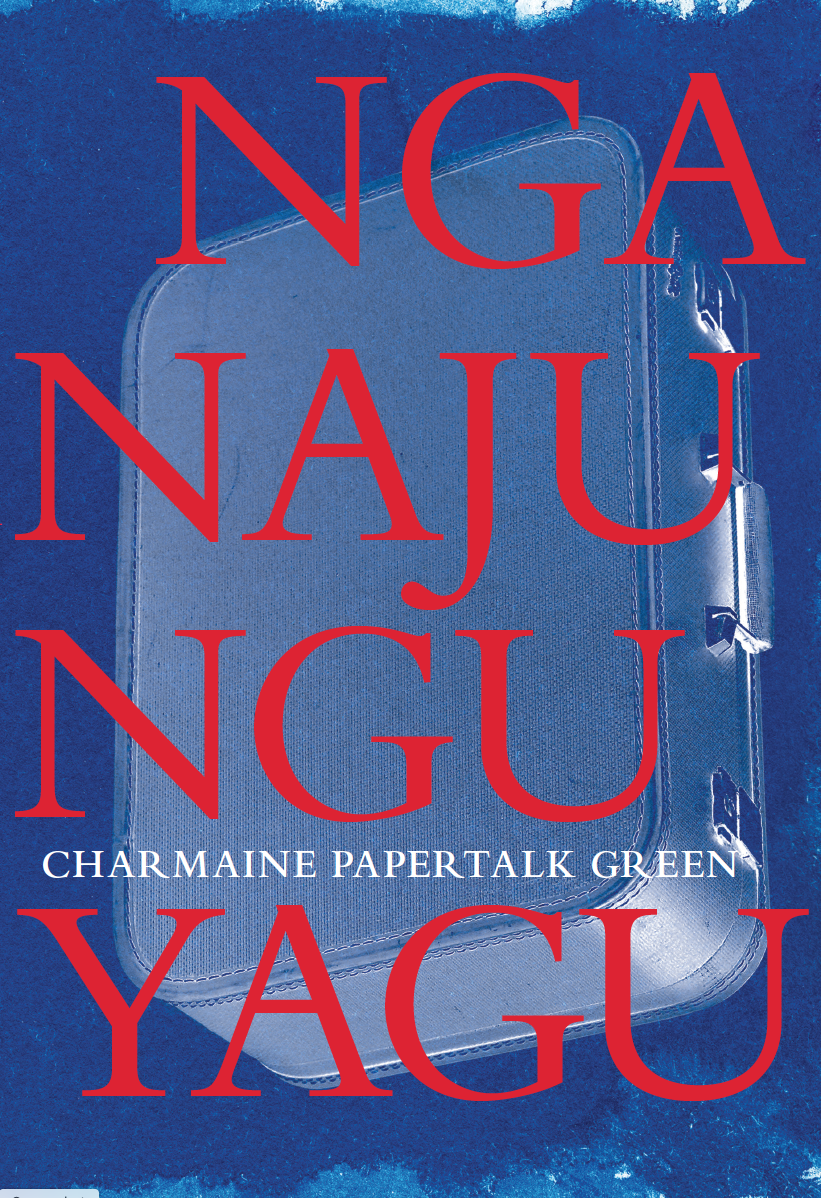 Since Charmaine Papertalk Green’s poetry was first published in The Penguin Book of Australian Women Poets in 1986, her voice on the page has been consistent: eloquently powerful, respectfully challenging and true to her role in life as a Yamaji Nyarlu.
Since Charmaine Papertalk Green’s poetry was first published in The Penguin Book of Australian Women Poets in 1986, her voice on the page has been consistent: eloquently powerful, respectfully challenging and true to her role in life as a Yamaji Nyarlu.
Posted in INTRODUCTIONS
Tagged Anita Heiss, Charmaine Papertalk-Green, Zoë Sadokierski
Introduction to Louise Crisp’s Yuiquimbiang
Read. This is poetry. Both a praise and a lament for Country. Read. There is little like it. Australia struggles with an embrace of the past, but Louise Crisp does not flinch from the intimacy of fact.
Posted in INTRODUCTIONS
Tagged Bruce Pascoe, Louise Crisp, Zoë Sadokierski
Introduction to Marjon Mossammaparast’s That Sight
Photo by Gen Ackland. BUY YOUR COPY HERE Marjon Mossammaparast’s That Sight offers us a wide-ranging series of viewpoints, taking the reader through various locations and histories. It zooms out to cosmological heights, and even beyond to God (or the …
Posted in INTRODUCTIONS
Tagged Lachlan Brown, Marjon Mossammaparast, Zoë Sadokierski
Introduction to Elena Gomez’s Body of Work
 There’s a difference between occupying a seemingly unceasing parade of subject positions through a kind of colonising, thieving, dissipatory borderlessness … and inhabiting them as a form of aesthetic and political revolt.
There’s a difference between occupying a seemingly unceasing parade of subject positions through a kind of colonising, thieving, dissipatory borderlessness … and inhabiting them as a form of aesthetic and political revolt.
Posted in INTRODUCTIONS
Tagged Elena Gomez, Fiona Hile, Zoë Sadokierski
Introduction to Helen Lambert’s Echoland
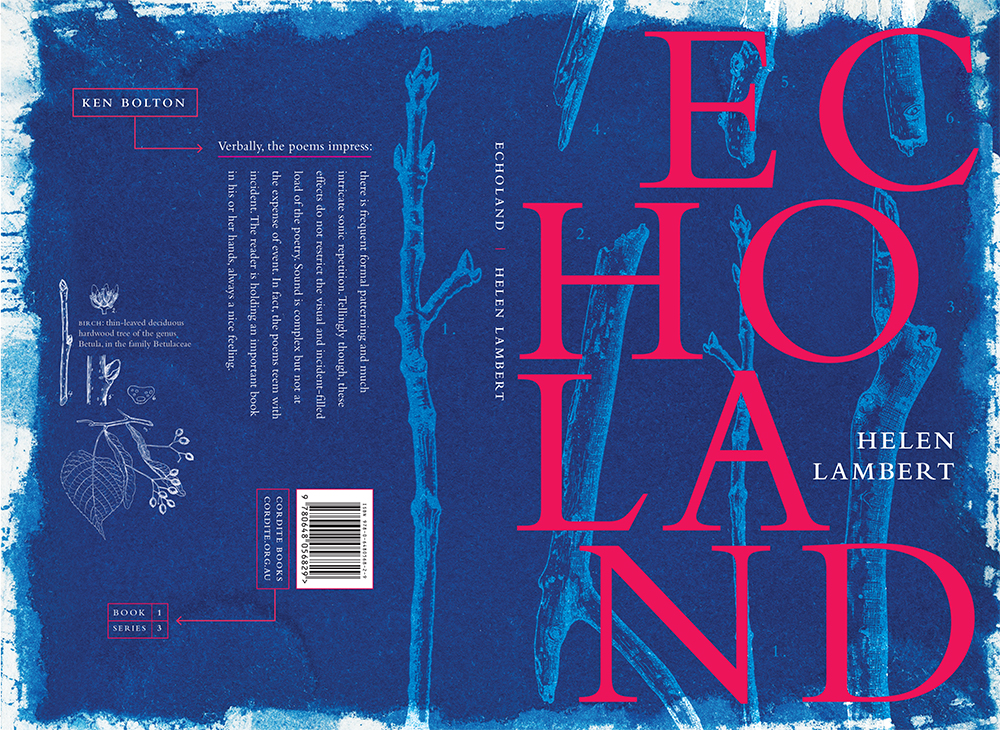 Helen Lambert’s work is as new to me as it will be to others – she has been operating away from Australian poetry for some time, with long periods in Ireland and, lately, Russia. One approaches a new poet warily. Yet the inventive and capable intelligence behind the poems here is immediately apparent. It is wonderful to be able to drop one’s guard, to forget it – and to enter a wonderful world.
Helen Lambert’s work is as new to me as it will be to others – she has been operating away from Australian poetry for some time, with long periods in Ireland and, lately, Russia. One approaches a new poet warily. Yet the inventive and capable intelligence behind the poems here is immediately apparent. It is wonderful to be able to drop one’s guard, to forget it – and to enter a wonderful world.
Posted in INTRODUCTIONS
Tagged Helen Lambert, ken bolton, Kent MacCarter, Zoë Sadokierski
Introduction to Siobhan Hodge’s Justice for Romeo
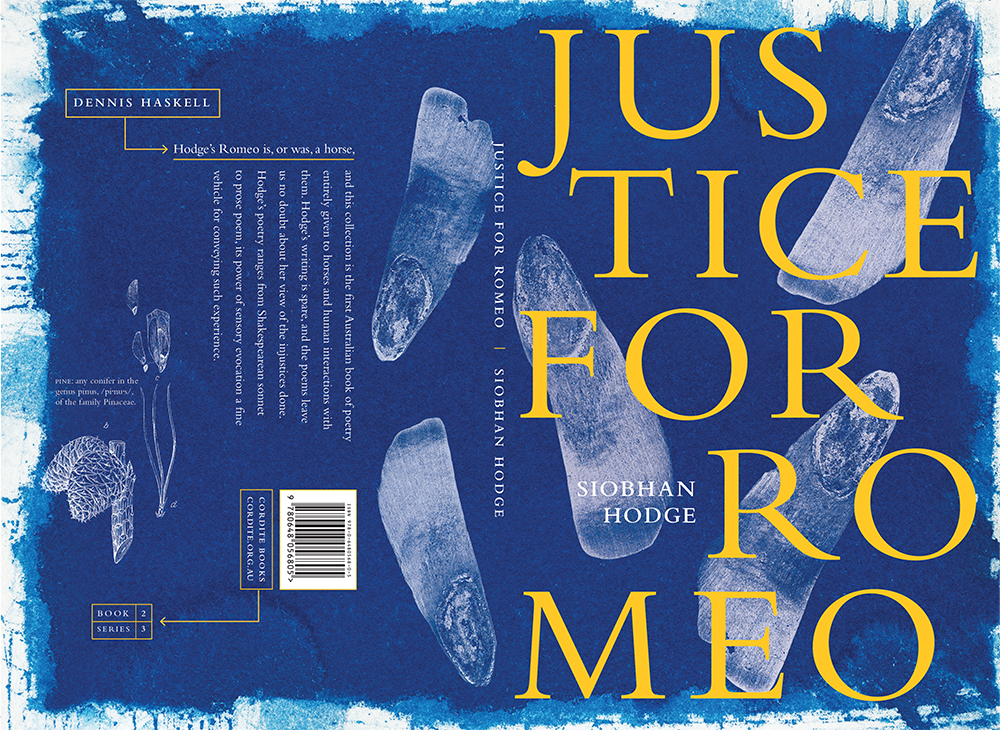 Justice for Romeo, as a title, will seem both accurate and misleading for most readers; this is a book decidedly concerned with justice, and Siobhan Hodge’s sense of ethical responsibility pervades the poems. Hodge’s book includes as epigraph the exchange between Romeo and a servant in Act I, Scene ii of the most famous love story of all time; the servant asks, ‘I pray, can you read any thing you see?’, to which Romeo replies, ‘Ay, if I know the letters and the language.’
Justice for Romeo, as a title, will seem both accurate and misleading for most readers; this is a book decidedly concerned with justice, and Siobhan Hodge’s sense of ethical responsibility pervades the poems. Hodge’s book includes as epigraph the exchange between Romeo and a servant in Act I, Scene ii of the most famous love story of all time; the servant asks, ‘I pray, can you read any thing you see?’, to which Romeo replies, ‘Ay, if I know the letters and the language.’
Posted in INTRODUCTIONS
Tagged Dennis Haskell, Kent MacCarter, Siobhan Hodge, Zoë Sadokierski
Introduction to Lindsay Tuggle’s Calenture
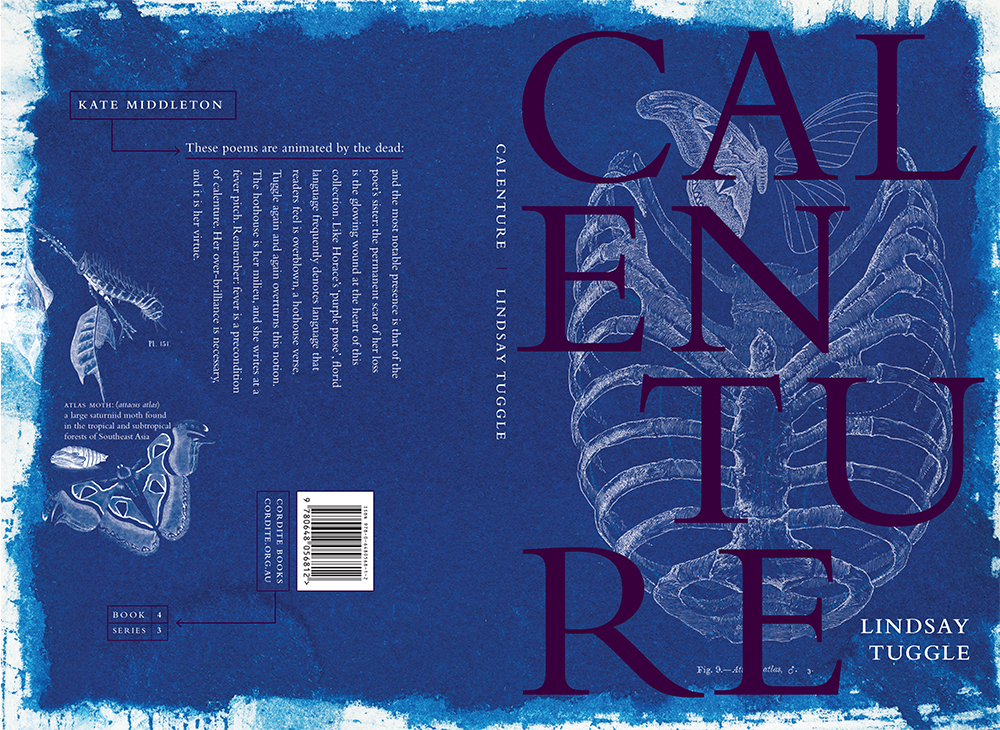 Lindsay Tuggle’s poetry is uncomfortable to read: the discomforts one feels in reading her work are the very thing that make it memorable. At once immensely personal, ornate, and unapologetically embedded in female experience, it is a style unconcerned with irony or terseness. It is a verse informed by the still-alive alternative histories of the American South and haunted by the Southern Gothic literature that these histories inform.
Lindsay Tuggle’s poetry is uncomfortable to read: the discomforts one feels in reading her work are the very thing that make it memorable. At once immensely personal, ornate, and unapologetically embedded in female experience, it is a style unconcerned with irony or terseness. It is a verse informed by the still-alive alternative histories of the American South and haunted by the Southern Gothic literature that these histories inform.
Posted in INTRODUCTIONS
Tagged Kate Middleton, Kent MacCarter, Lindsay Tuggle, Zoë Sadokierski
Introduction to Pascalle Burton’s About the Author Is Dead
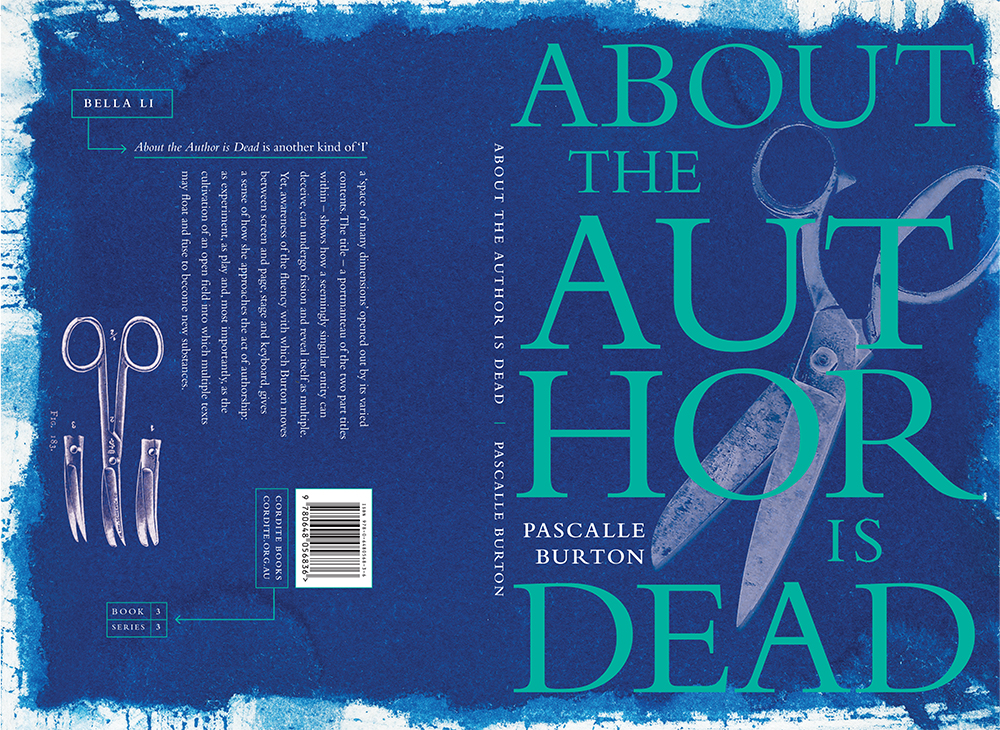 Pascalle Burton’s About the Author is Dead refers to, and opens with an epigraph from, Roland Barthes’s seminal essay, ‘The Death of the Author’. Inside the collection, we find not one author but many: David Byrne and Grace Jones, Miranda July and Jacques Derrida; authors who are filmmakers, authors who are poets, philosophers and musicians.
Pascalle Burton’s About the Author is Dead refers to, and opens with an epigraph from, Roland Barthes’s seminal essay, ‘The Death of the Author’. Inside the collection, we find not one author but many: David Byrne and Grace Jones, Miranda July and Jacques Derrida; authors who are filmmakers, authors who are poets, philosophers and musicians.
Posted in INTRODUCTIONS
Tagged Bella Li, Kent MacCarter, Pascalle Burton, Zoë Sadokierski
20 Poets, a Free Anthology from Cordite Books
The geographic barriers that can, at times, hinder Australian literature are no longer relevant, and poetry communities around the world must be enlightened by the commanding, demanding and exciting trajectory of contemporary Australian poetics.
Posted in GUNCOTTON
Tagged Alan Loney, Anne Elvey, Autumn Royal, Bonny Cassidy, Broede Carmody, Chris Mann, Claire Nashar, derek motion, Javant Biarujia, Jeanine Leane, Jen Crawford, John Hawke, Kent MacCarter, Kris Hemensley, Matthew Hall, mez breeze, Natalie Harkin, Omar Sakr, Rachael Briggs, Ross Gibson, Tanya Thaweeskulchai, Tony Birch, Zoë Sadokierski
Introduction to Tony Birch’s Broken Teeth
Cover design by Zoë Sadokierski Don’t think you’ll get away with lightly reading these Tony Birch poems. They are not just words whistling on the wind. They come laden with other gifts. With a whole place: Melbourne. With a long …
Posted in INTRODUCTIONS
Tagged Kent MacCarter, Stephen Muecke, Tony Birch, Zoë Sadokierski
Introduction to Jen Crawford’s Koel
Cover design by Zoë Sadokierski The koel is called after its call – its name is onomatopoeic, from the Greek ὀνοματοποιία: ‘ὄνομα’ for ‘name’ and ‘ποιέω’ for ‘I make’. The koel becomes itself as it sings out and is heard …
Posted in INTRODUCTIONS
Tagged Divya Victor, Jen Crawford, Kent MacCarter, Zoë Sadokierski
Introduction to Autumn Royal’s She Woke & Rose
Cover design by Zoë Sadokierski She Woke & Rose introduces us to a poet, Autumn Royal, who is unafraid to spark light in the darkest of places. The poems in this impressive debut collection illuminate the uneasy space of the …
Posted in INTRODUCTIONS
Tagged Autumn Royal, Kent MacCarter, Maria Takolander, Zoë Sadokierski
Introduction to Claire Nashar’s Lake
Cover design by Zoë Sadokierski In Lake, Claire Nashar navigates the connections between people and between person and place in a striking elegy not only for her grandmother, leading geology academic Beryl Nashar, but also for Tuggerah Lake, an estuary …
Posted in INTRODUCTIONS
Tagged ann vickery, Claire Nashar, Kent MacCarter, Zoë Sadokierski
Introduction to Javant Biarujia’s Spelter to Pewter
Cover design by Zoë Sadokierski In Javant Biarujia’s poetry, language matters – matters as in important, and matter as a unifying substance, a material to be transformed, and in so doing, becomes transforming. Particles of language are pounded out, splintered, …
Posted in INTRODUCTIONS
Tagged Berni M Janssen, Javant Biarujia, Kent MacCarter, Zoë Sadokierski
Introduction to Rachael Briggs’s Common Sexual Fantasies, Ruined
Cover design by Zoë Sadokierski The polka originated in nineteenth-century Bohemia. A dance for two, it is reputedly simple to learn. Three steps and a hop, in fast duple time, with various steps – Turning Basic, Pursuit and Waltz Galop …
Posted in INTRODUCTIONS
Tagged Felicity Plunkett, Kent MacCarter, Rachael Briggs, Zoë Sadokierski
The Sydney Launch of Harkin, Gibson, Loney and Hawke
OBJECT: Australian Design Centre, Thursday 25 June, 2015 I’m pleased to say that I was at the launch of the very first issue of Cordite Poetry Review, way back in 1997. Good heavens, is that eighteen years ago? The journal …
Posted in GUNCOTTON
Tagged Adrian Wiggins, Alan Loney, John Hawke, Kent MacCarter, Natalie Harkin, Peter Kirkpatrick, peter minter, Ross Gibson, Zoë Sadokierski
Cordite Book Launch: Loney, Gibson, Hawke, Harkin
Collected Works Bookstore, Wednesday 6 May, 2015 I will begin with a bit of spontaneous resentful metaphysics. I am sorry to do so, for a number of reasons, but there we are. If it can be justified at all, it …
Posted in GUNCOTTON
Tagged Alan Loney, Gig Ryan, John Hawke, Justin Clemens, michael farrell, Natalie Harkin, Pam Brown, peter minter, Ross Gibson, Zoë Sadokierski
Cordite Books
We’re pleased to tumble out into the world these first four print collections in the new Cordite Books imprint. We had considered print collections for a few years, but the tipping point to actually publish them came in late November …
Posted in GUNCOTTON
Tagged Alan Loney, John Hawke, Kent MacCarter, Natalie Harkin, Penelope Goodes, Ross Gibson, Zoë Sadokierski
Introduction to Natalie Harkin’s Dirty Words
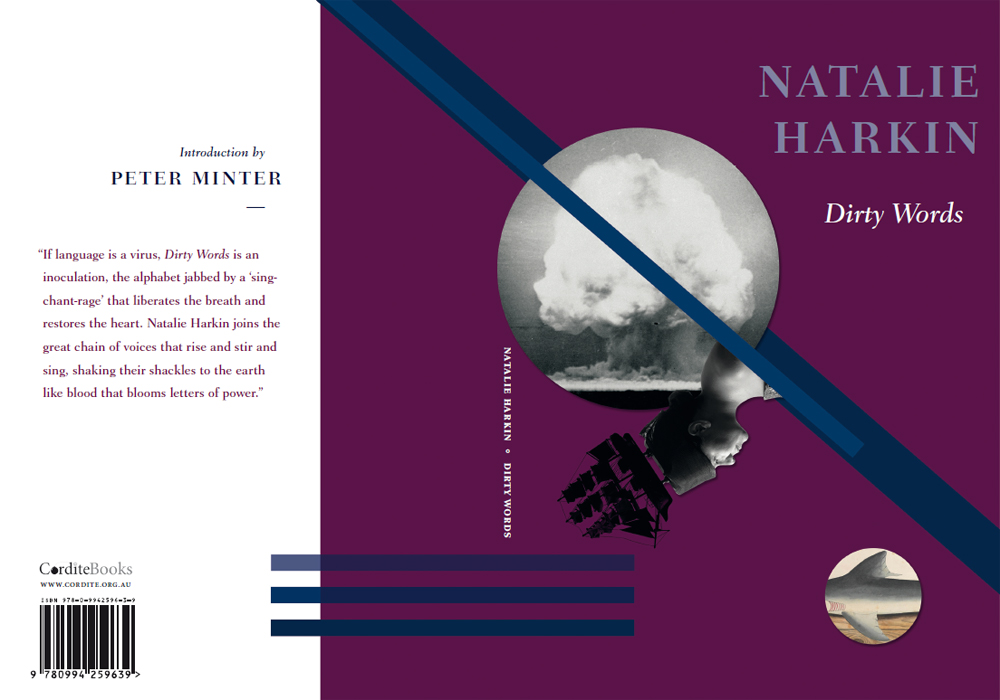
Cover design by Zoë Sadokierski
Posted in INTRODUCTIONS
Tagged Kent MacCarter, Natalie Harkin, peter minter, Zoë Sadokierski
Introduction to Ross Gibson’s Stone Grown Cold
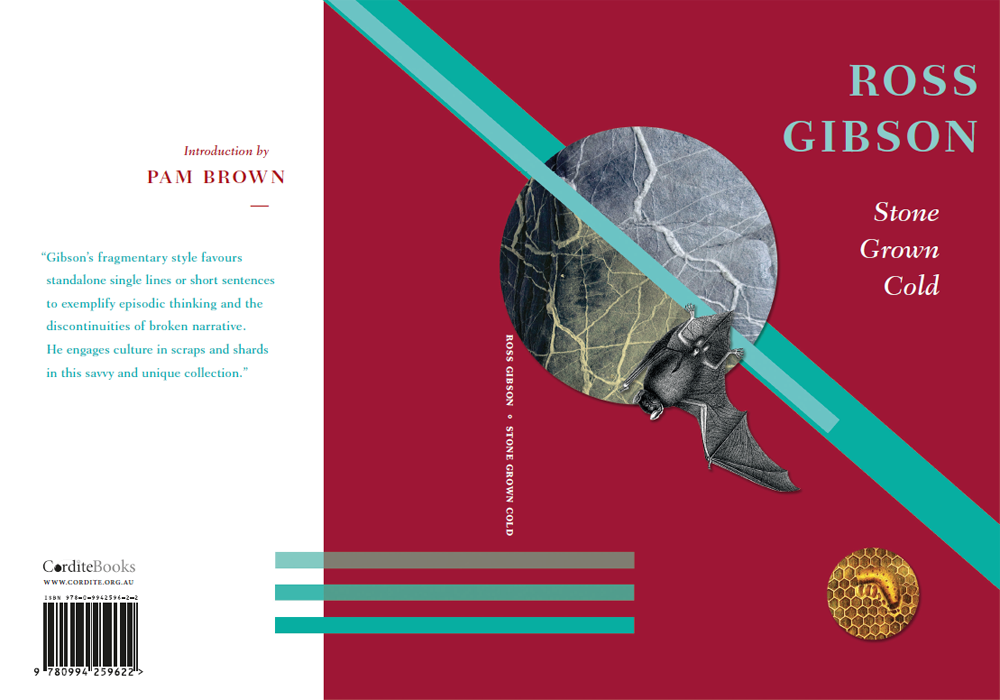
Cover design by Zoë Sadokierski
The works that Ross Gibson has written and edited over the past thirty years could be classed as political aesthetics. In books like Seven Versions of an Australian Badland, chronicling the wretched historical miscreants of Queensland’s Brigalow country, or 26 Views of the Starburst World: William Dawes at Sydney Cove 1788–1791, speculatively tracing English astronomer William Dawes’s scientific work and his relationship with the Indigenous Eora people of Sydney Harbour in a few late years of the eighteenth century, Ross Gibson’s method is procedural. Seven Versions and 26 Views form a compositional design that he has described as ‘fractal’, allowing unfixed multiple views and patterns. The author’s practice of creative fragmentation, applied to the poems and short prose pieces in this new collection, eschews linearity and dull chronology.
Posted in INTRODUCTIONS
Tagged Kent MacCarter, Pam Brown, Ross Gibson, Zoë Sadokierski
Introduction to John Hawke’s Aurelia

Cover design by Zoë Sadokierski
John Hawke’s forensic inquiries in this book are layered with casual erudition – Diderot, Czech poet Vladimir Holan – and locate the poem as transformative state. Many of these poems conclude with a mystical ascent into nature, reminiscent of Patrick White scenes in which the division between consciousness and the universe wavers, signifying that any reconciliation is epiphanic, claimed by art or religion. Yet nature belittles human effort – ‘The path to the point is marked by a scattering / of impermanent hand-made memorials’ – that is, the poet’s endeavours are precariously, though heroically, makeshift, overlaid; but nature is also that which threatens or devours, ‘digesting light’.
Posted in INTRODUCTIONS
Tagged Gig Ryan, John Hawke, Kent MacCarter, Zoë Sadokierski
Introduction to Alan Loney’s Crankhandle
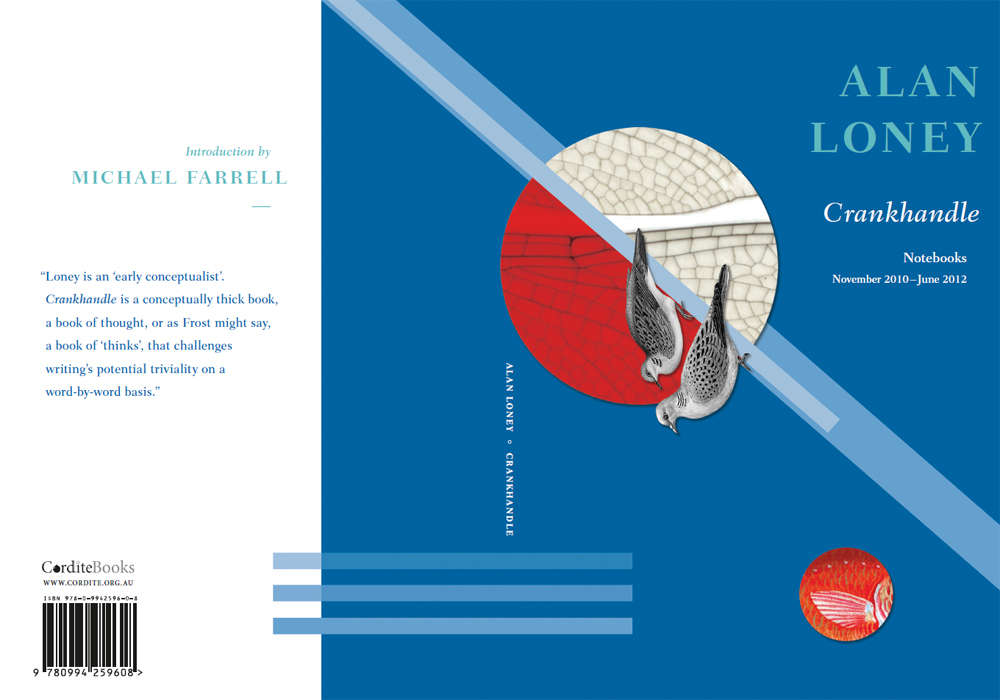
Cover design by Zoë Sadokierski
Since moving from New Zealand to Australia back in 2001, Alan Loney has carried on a prolific, internationally recognised career in Melbourne. Crankhandle, Loney’s latest published work, follows on from 2014’s chapbook collaboration with Max Gimblett, eMailing flowers to Mondrian, and the books from Five Islands Press, Nowhere To Go (2007) and Fragmenta Nova (2005). Borrowing his contemporary Laurie Duggan’s term, Loney can be read as a ‘late objectivist’: worrying at that particular American formal legacy, with its attendant philosophical and ethical concerns.
Posted in INTRODUCTIONS
Tagged Alan Loney, Kent MacCarter, michael farrell, Zoë Sadokierski
Analogue Bodies: A Conversation with Tom Lee and Zoë Sadokierski
Analogue Bodies is a collection of essays by Tom Lee, materialised as set of illustrated books by Zoë Sadokierski. The project looks at different parts of, and events within, the human body and historical ways of depicting and making sense of them. It aims to humour and, on its day, to educate. It was presented as part of the recent Emerging Writers’ Festival 2014 at the Wheeler Centre.
Posted in GUNCOTTON
Tagged Jacinta Le Plastrier, Sam Twyford-Moore, Tom Lee, Zoë Sadokierski









